Patient safety at Royal Glamorgan Hospital's A&E 'precarious'
- Published
- comments
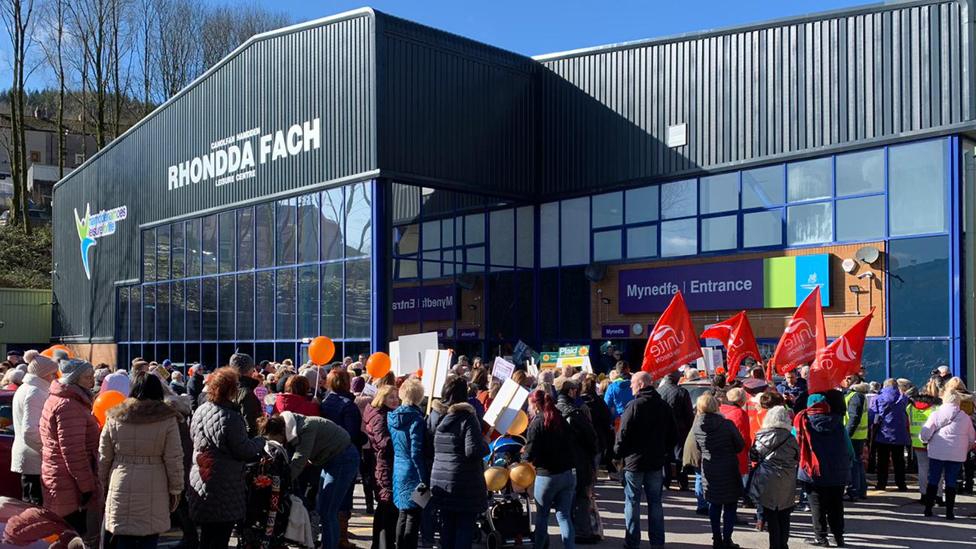
Campaigners gathered before the health board meeting on Thursday
The under-threat A&E unit at the Royal Glamorgan Hospital is so short staffed that patient safety has been left in a "precarious" position, bosses have warned.
There is only one full-time consultant at the unit when there should be 10.
Such is the shortage of staff that the A&E has nearly closed two or three times in the eight weeks since the start of 2020, its management said.
They are looking at changes, with campaigners fearing the A&E will close.
Campaigners again held a protest ahead of Cwm Taf Morgannwg health board's meeting on Thursday.
It decided to continue looking at its options for A&E at the hospital in Llantrisant, which has attracted local opposition from residents and politicians.
It comes as the medical director of the health board, Dr Nick Lyons, admitted it "may well be true" that no "substantive effort" was made to recruit A&E consultants for five years.
Appearing before AMs on the assembly's health committee on Thursday, Dr Lyons, who is new to the post, said the board was now "recruiting vigorously".
How severe are the staff shortages?
The Royal Glamorgan's only full-time A&E consultant is set to leave in April
It is supposed to have 10 consultants but will soon have none
Staff are being drafted in to cover from the Princess of Wales Hospital, Bridgend
As well as consultant shortages, only 12% of its middle grade shifts can be covered by permanent staff
Consultant numbers at Prince Charles Hospital in Merthyr Tydfil are "significantly lower" than they want, and even in the best staffed departments at the Princess of Wales, they were not up to ideal numbers.
What are the options?
The health board in an ideal world wants to keep A&E open 24 hours a day but cannot deliver this safely as things stand.
The options are for the Royal Glamorgan to be a round-the-clock minor injuries unit but for its A&E to close. The other scenario is for the department to close overnight, with seriously ill patients being sent to Bridgend (15 miles/24km away) or Merthyr (24.5 miles/34.5 km away).
Dr Lyons said there was an "increasingly small" emergency doctor workforce at the hospital, which meant the team was not able to provide safe care on occasions and there was an increased risk.
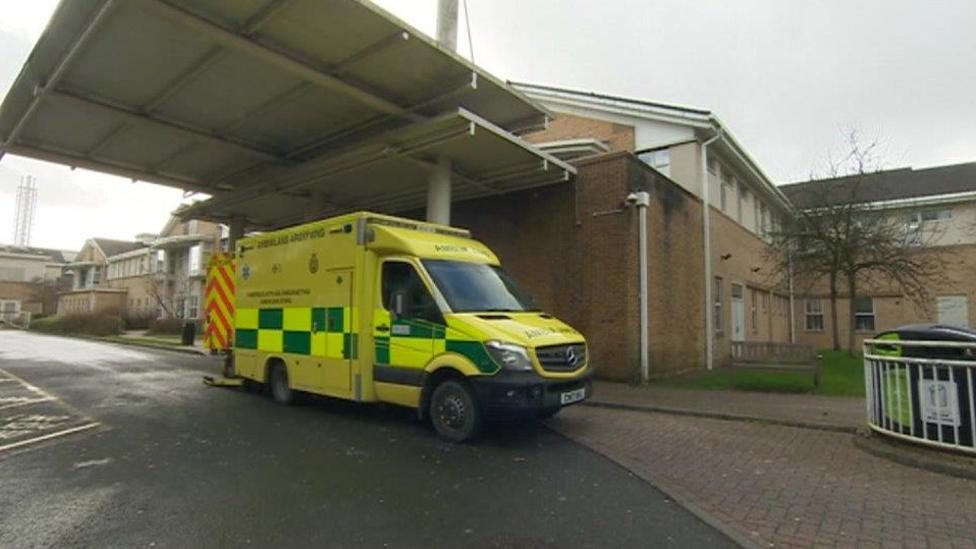
The health board admitted "no substantive effort' had gone into recruiting A&E consultants over a five year period
Twice already over Christmas, A&E at the Royal Glamorgan had to close to the sickest patients, who were diverted to Prince Charles because of a lack of doctors.
Dr Lyons said they came close again "two or three times" to shutting since then, because of doctor shortages, leaving patient safety in a precarious position.
"If you have your own staff you're able to ring and say we've got sickness or absence, come in," he said.
"But if there is sickness or absence among locum doctors, the other locums have no obligation to come in at all - indeed they're probably working in another hospital in Wales or elsewhere in the UK."
He said there was a risk using staff not used to working together in the same team - and of an unplanned closure when there were too many patients to cope with.
"It's far more fragile than I'm confident with to provide the assurance that this department is consistently safe and will remain so," he added.
One patient had already died because of an over-dependence on agency or locum staff - and the health board was aware of other cases when patients were put in danger.
The NHS faces a nationwide shortage of A&E consultants, with the bigger trauma centres finding it easier to attract staff.
Dr Lyons said they were still not able to judge which was the best option until they had been explored in more detail, heard from clinicians and also from the public. But he was adamant it was "not a done deal".
Could other services at the hospital be affected?
He said he wanted to provide a 24-hour service but only if staff could be provided to give a service safely on a consistent basis.
Consultant urlogist Tim Appanna, chairman of the hospital's senior staff committee, recognises something has to change.
He said in an ideal world there would be a 24-hour A&E but he recognises that in the short term - perhaps for a year - they might have to move to an option when the Royal Glamorgan's consultant-led A&E closed at night.
But he would want this to only be a temporary solution, in the hope recruitment can be addressed.
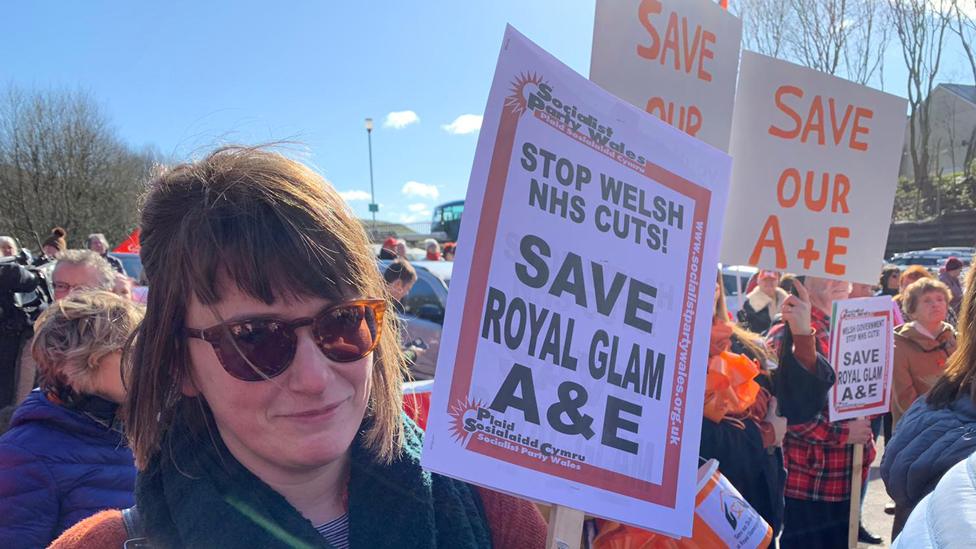
Protesters outside the health board meeting on Thursday fear the unit will close
He is worried if it was permanent there could be a "domino effect" on other departments and services, including anaesthetics.
"It wouldn't be the sort of hospital it is now," he said. "It's a very efficient service, we deal with a lot of patients.
"This hospital has always done very well with surgery and medicine and if we start to lose those services it would a problem, not for us, for the population we serve - and bear in mind in this health board, the biggest concentration of population is sitting on our doorstep."
What did the health board discuss?
It looked at the options again and its own efforts to bring in new staff, although recognising recruiting emergency doctors is "very challenging".
It heard concerns already expressed about the changes:
Transport and accessibility, including the "unique topography" of the valleys
Criticism about "inadequate efforts" to recruit and retain staff, with hospital managers admitting uncertainty over the Royal Glamorgan's future has not helped
Worries over the impact on other hospital services
"Confusion" over the scope of what minor injuries services do - and the need to improve existing units in the Cynon Valley and Rhondda
"Lack of trust and confidence" in the health board, with it widely believed that the decision has already been made.

How many use A&E?
Slightly more patients use the emergency unit at the Royal Glamorgan Hospital each month than use Prince Charles - but together they have seen nearly 125,300 patients over the last year, an average of 10,440 a month.
Increasing numbers are using both hospitals each year - but the health board wants to gauge the likely impact on neighbouring hospitals, including Cardiff, on any changes it makes.
Less than 1,000 patients a month also use two minor injuries units.
Mr Appanna said: "We need a line drawn in the sand..all this talk about downgrading the Royal Glamorgan needs to stop. We need to talk about how to bolster services. It's a fantastic hospital and the passion you see from the people and population is mirrored by the staff."
What are campaigners saying?
Protesters say proposed changes to A&E services would mean longer journeys to get help
At Thursday's protest was Gail Davies, a retired GP from Pontypridd.
She said the recent flooding showed clearly why the site was vital and how delays could cost lives in future.
"I'm very concerned about what's planned, because of the geography of the area it's very difficult to get up and down the valleys.
"Royal Glamorgan has the busiest centre, covering a 250,000 population - they're the busiest with the fewest consultants."

Susan Morgan said lives would be put at risk
Susan Morgan, a councillor in Ferndale, Rhondda, said one of her grandchildren had an asthma attack last year and a neighbour had to take her by 4x4 vehicle through snow to A&E for resuscitation within minutes.
"If we'd had to take her to Prince Charles it would have taken probably and hour and a half to two hours, with the mountain road closed.
"We talk about the golden hour - this isn't going to happen if we have a problem with the roads," she said.
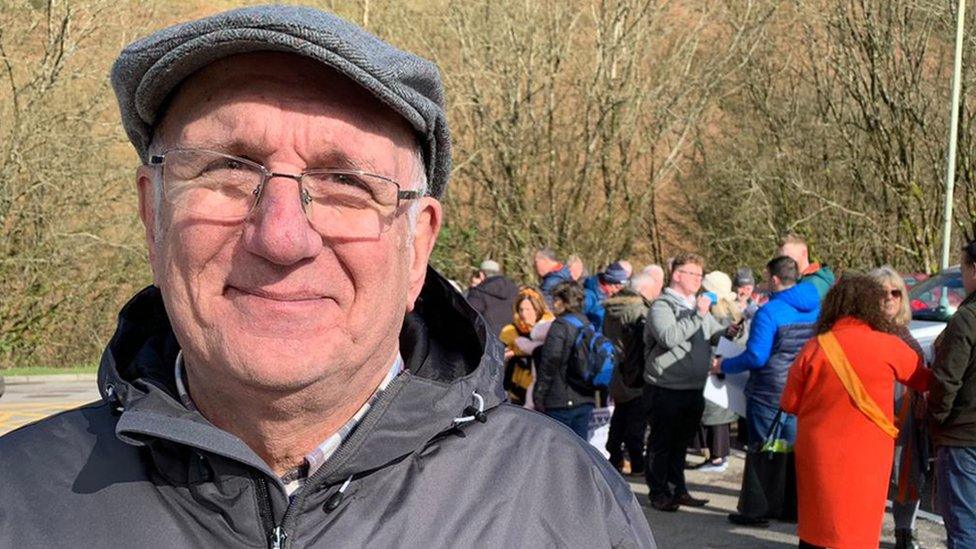
Lance Gibbs said people wanted the shortest routes to hospital
Former teacher Lance Gibbs said he feared a temporary closure would become permanent.
"If it's your child or grandfather who needs immediate attention and the shortest route is the Royal Glamorgan, that's what you want to see."
Recruitment challenges
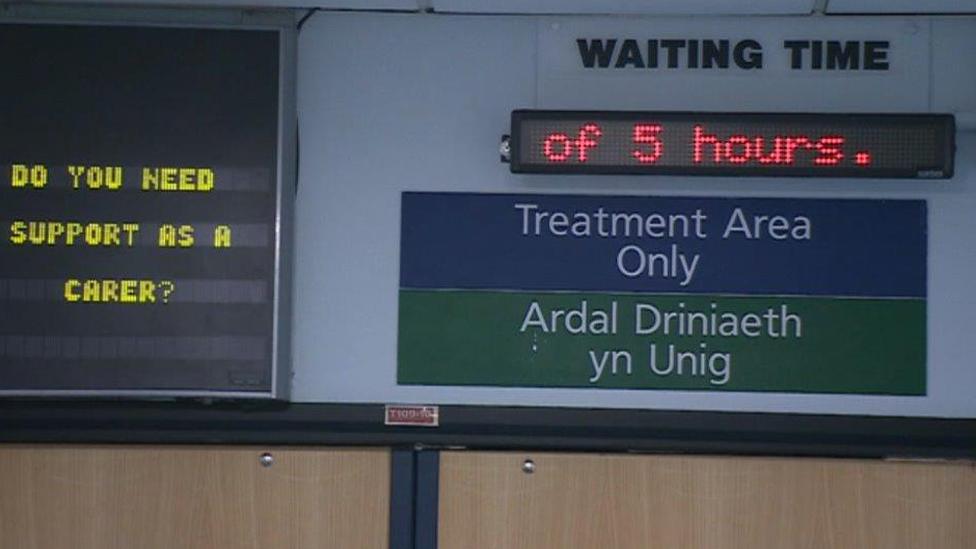
One option being considered is for the A&E unit close at night
Local Plaid Cymru AM Leanne Wood said recruitment "had been difficult if not impossible" at Royal Glamorgan, because A&E was already facing downgrading under proposals agreed six years ago and called for a political commitment to its long term future.
"It has become a self-fulfilling prophecy. Nobody chooses to work in a place under threat."
- Published21 February 2020
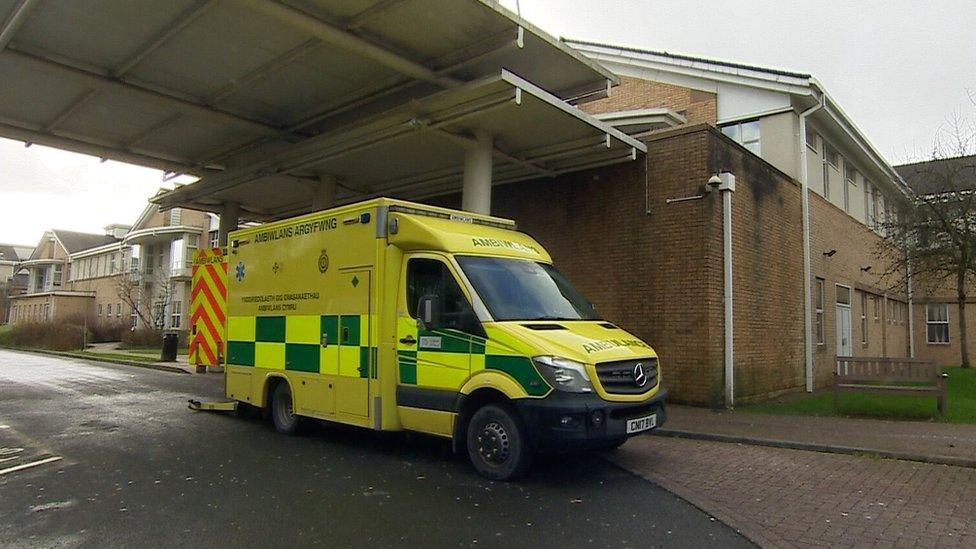
- Published3 February 2020
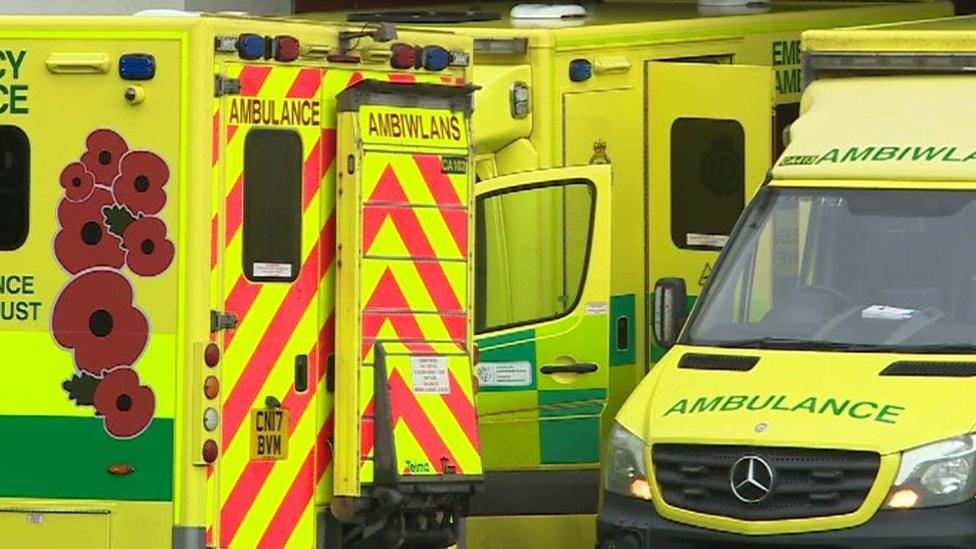
- Published24 January 2020
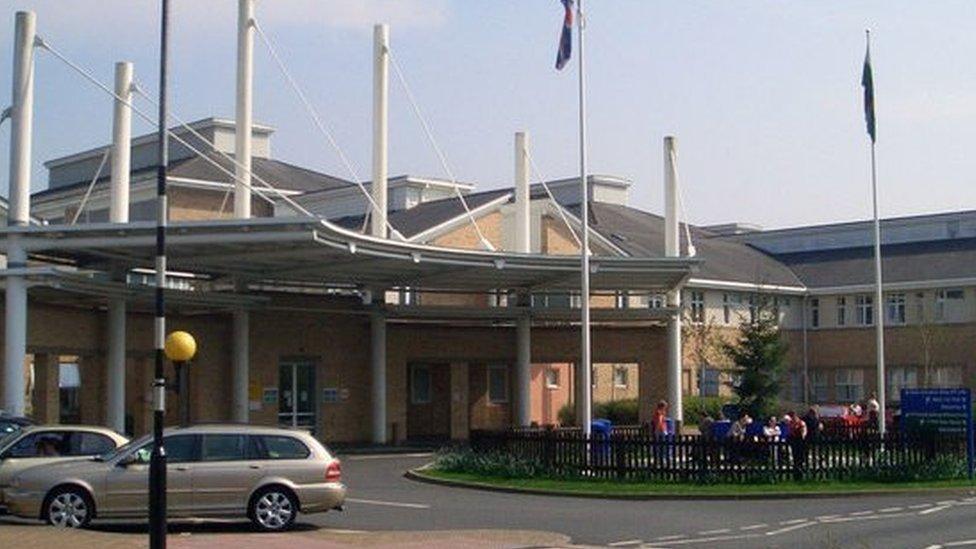
- Published23 January 2020
